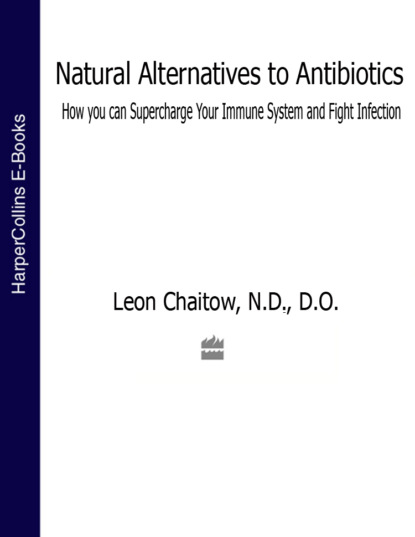По всем вопросам обращайтесь на: info@litportal.ru
(©) 2003-2024.
✖
Natural Alternatives to Antibiotics: How you can Supercharge Your Immune System and Fight Infection
Автор
Год написания книги
2019
Настройки чтения
Размер шрифта
Высота строк
Поля
In eczema the skin barrier is not normal, it’s broken, so superantigenic exotoxins get through. But if you use plenty of emollients – bath oils, emollient creams and ointments and emollient soap substitutes (to stop the skin from drying) – you can restore the skin barrier.
By using these and other simple techniques (including wrapping the area in wet bandages after smothering it in emollient creams), antibiotics become largely unnecessary.
The key message which this offers us is that superbugs have emerged from the inappropriate use of antibiotics, that one of the byproducts of their existence is superantigens, and that the answer (except in the short term) surely does not lie in even more antibiotics being used.
Staphylococcus aureus infection occurring in hospital settings presents us with the ultimate horror – untreatable infection. This particular superbug is the bacteria most often referred to in newspaper and magazine articles on the subject.
It is, however, by no means the only dangerous multi-resistant bacteria, and in the list in Chapter 2 a brief profile will be given of major members of this select team of bacterial antibiotic survivors, each of which has developed resistance to antibiotics and therefore has the ability to produce infections of dramatic intensity, often totally impervious to treatment.
THE ‘GARBAGE CAN’ EXAMPLE
Before briefly examining the superbugs, we need also to try to get a picture of an important phenomenon: the fact that many potentially dangerous bacteria (and other microorganisms) live in or on us – all the time – and do us no harm, most of the time.
The fact is that a swab of your throat or mine will reveal the presence of hundreds of different organisms, some of which are known to be involved in potentially serious infection. Among those which are almost certainly living in your nasal areas, and mine, are that most dreaded of superbugs, Staphylococcus aureus – so why are we not ill?
When it is functioning normally, your immune system is capable of maintaining control of these microorganisms, and prevents them from spreading and producing disease or illness. When, for any of a large number of possible reasons, your immune system operates at lower levels of efficiency, controls are weakened and this gives the microorganism the opportunity to proliferate and cause illness. For ways to boost your immune system, see Chapters 5 and 6.
The fact that for most of the time, potentially dangerous bacteria live in and on us without causing harm, highlights what has been called the ‘garbage can’ effect.
If a garbage can contains a great deal of waste which is decaying, rotting or putrefying, it will act as a magnet to flies and other scavengers who are attracted to just such material. An environment will have been created which is just right for them to use, to eat the garbage, or to lay their eggs in it perhaps.
If we create a similar environment in our own bodies, one which is ‘just right’ for a particular bacteria, virus or fungus, which offers it the chance to breed and eat well and where the normal controls have been relaxed, we have to expect these scavengers to take advantage of the situation.
If you were to see a garbage can overflowing with putrid material and surrounded by swarms of flies, would you be tempted to think that the problem would be solved by spraying and killing the flies? Such an approach might offer a very short-term answer to the problem, but would do nothing at all about the underlying cause as to why they were there.
Instead of trying to poison the flies, would you not consider it likely that the flies would not be there at all if the garbage can was emptied and cleaned?
The analogy in which I have compared a garbage can with an unhealthy human body is not completely accurate. However, it is true that one of the factors which can allow an explosion of activity on the part of usually inactive but potentially dangerous microorganisms in the body is a toxic state of the tissues.
A toxic condition would also involve a reduction in the efficient working of at least local aspects of the protective (immune) system, which would have been controlling the activity of bacteria, yeasts and viruses.
OPPORTUNISM
All organisms on the planet – bacteria or people – thrive if they are given the right surroundings, a condition which includes accommodation, safety from attack, adequate nourishment and a chance to breed. Therefore, if we offer bacteria, yeasts and viruses an environment in which our natural defense mechanisms offer only weak and inadequate controls, so that they will not be vigorously attacked, and if at the same time the environment (in this case part of your body) offers them surroundings which are suitable (for them) and which meet their needs – offering food and a chance to multiply – we should not be surprised if they take advantage of this. As a result, infection occurs.
And if infection occurs and involves a particular microorganism which is resistant to antibiotics, as well as being confronted by enfeebled defense systems (our immune system can become weakened for any of a number of reasons which we will explore in later chapters), we will have placed ourselves in great peril.
When bacteria (or other microorganisms) take advantage of a weak immune system, they are said to be acting opportunistically – taking their chances because they have been offered an easy ride.
The degree to which our immune system is operating efficiently or inefficiently, and the excellence, or lack of it, with which our tissues are presenting ideal, or less than ideal, conditions for potential invaders, decides how vulnerable or susceptible we are.
The comparison of this scenario with the defense of a country by its army is obvious, and as we will see in later chapters there is a great deal we can do to enhance our own personal defenses and so deny opportunities to potential enemies.
If our natural defense systems have been weakened (again, for whatever reasons) and infection threatens life itself, we need to have available options.
One choice which a suitably qualified health care provider may make in such a crisis would be to use antibiotics. But what if the organism involved is not vulnerable, has become resistant to antibiotics?
This is the scenario faced by many doctors today, often in hospital settings, where superbugs have emerged as being almost impervious to antibiotic use.
It is also happening in the community, for example as TB reappears, involving strains of bacteria which have become resistant to the medications which previously controlled them.
The ways in which this has happened will be summarized later in Chapter 2, after which we will meet some of the leading characters in the story, the superbugs.
WILL GENETIC MODIFICATION HELP?
New research has suggested that genetic engineering may allow scientists to develop ways of modifying the genetic material of bacteria such as Staphylococcus aureus to remove their acquired or inherited resistance to antibiotics, so once again making them vulnerable and easier to control.
In a speech to the National Academy of Sciences, Nobel Laureate Professor Sidney Altman announced that, ‘This method may one day allow us to restore the full usefulness of today’s front-line antibiotics.’
The research which led to this statement was performed at Yale, where scientists used synthetic genetic material to ‘switch off’ the genes in the bacteria which produce resistance. They were in this way able to restore the sensitivity of E. coli bacteria to ampicillin, to which the E. coli bacteria had become resistant. An enormous amount of research remains to be done, most notably as to how to get the synthetic genetic material into the infecting bacteria, nevertheless this research at least offers some hope for the future.
But even if this approach proves possible and ultimately ‘successful’, it will only represent the continuation of a method which has led us to the present crisis situation. This is, after all, still an approach which focuses attention on ‘killing the enemy’ rather than improving natural defenses, which many would say was doomed to failure from the start. It is likely, therefore, that initial success in using genetic engineering on resistant bacteria to once again make them vulnerable to antibiotics is almost certain to result, in time, in these bacteria finding other ways of becoming resistant, as they have so successfully done up till now.
WHY DO BACTERIA DEVELOP RESISTANCE TO ANTIBIOTICS?
In his book Alternatives to Antibiotics, Dr John McKenna reports that in the early days of the use of penicillin, its discoverer, Alexander Fleming, warned that if antibiotics were used inappropriately bacterial strains would mutate to produce resistance to the drugs.
This would be more likely, and possibly more serious, if:
antibiotics (penicillin was the main one being used in 1945, when this statement was made) were used orally. By using the drug intravenously it would be more likely to reach the target area, whereas taken orally this is less certain.
the wrong doses were given. Too little would allow some bacteria to survive, and so increase the risks of mutation.
courses were not completed. This too would lead to survival of some, hardier bacteria, which would then proliferate.
courses went on too long. This would increase the likelihood of resistant organisms emerging from the attack on them, as well as the probability of damage occurring to the internal ecology of the body, something we will discuss in more detail in Chapters 8 and 9.
Clearly Fleming was correct.
And to this list should be added one of the worst of all ‘wrong uses’: when an agent (antibiotic) is used to treat something it cannot control, for example a virus.
A report in the British Medical Journal on research done at Southampton University indicated that when antibiotics are given to treat a sore throat (which could be of viral or bacterial origin) it made no difference whatever to the time it took for the individual to recover.
Over 700 patients were treated for 10 days with either antibiotics or with nothing at all.
All the patients got better at the same rate.
It is common practice for doctors to issue prescriptions, often in submission to demands by patients, for problems such as this. Undoubtedly, the degree of such inappropriate antibiotic use has added to the superbug phenomenon.
Another study conducted in Holland involved over 200 patients with inflamed sinuses, confirmed by x-ray, in which half the patients were given antibiotics and the other half a dummy pill. There was no difference whatever in the speed of recovery, or in the number of subsequent relapses as confirmed when these patients were contacted a year later on.
Otitis media and Antibiotics
The way Otitis media (infection of the middle ear) has been and is being treated and mistreated using antibiotics gives us a perfect example of the problems we face.
Here we see a condition which is widespread, almost always bacterial in origin, almost always self-limiting (that is, gets better on its own), and almost always attracts antibiotic treatment – as a result of which resistant strains of bacteria have developed. Yet this obviously ‘wrong’ treatment continues to be suggested in most cases by most doctors and many specialists.
Consider what is now known (or what should now be known) about antibiotic treatment for Otitis media, which affects tens of thousands of children each year.









